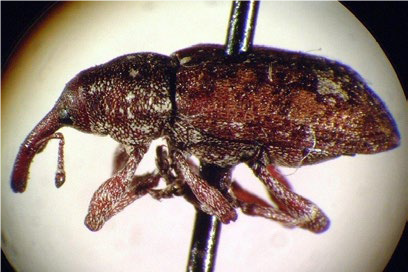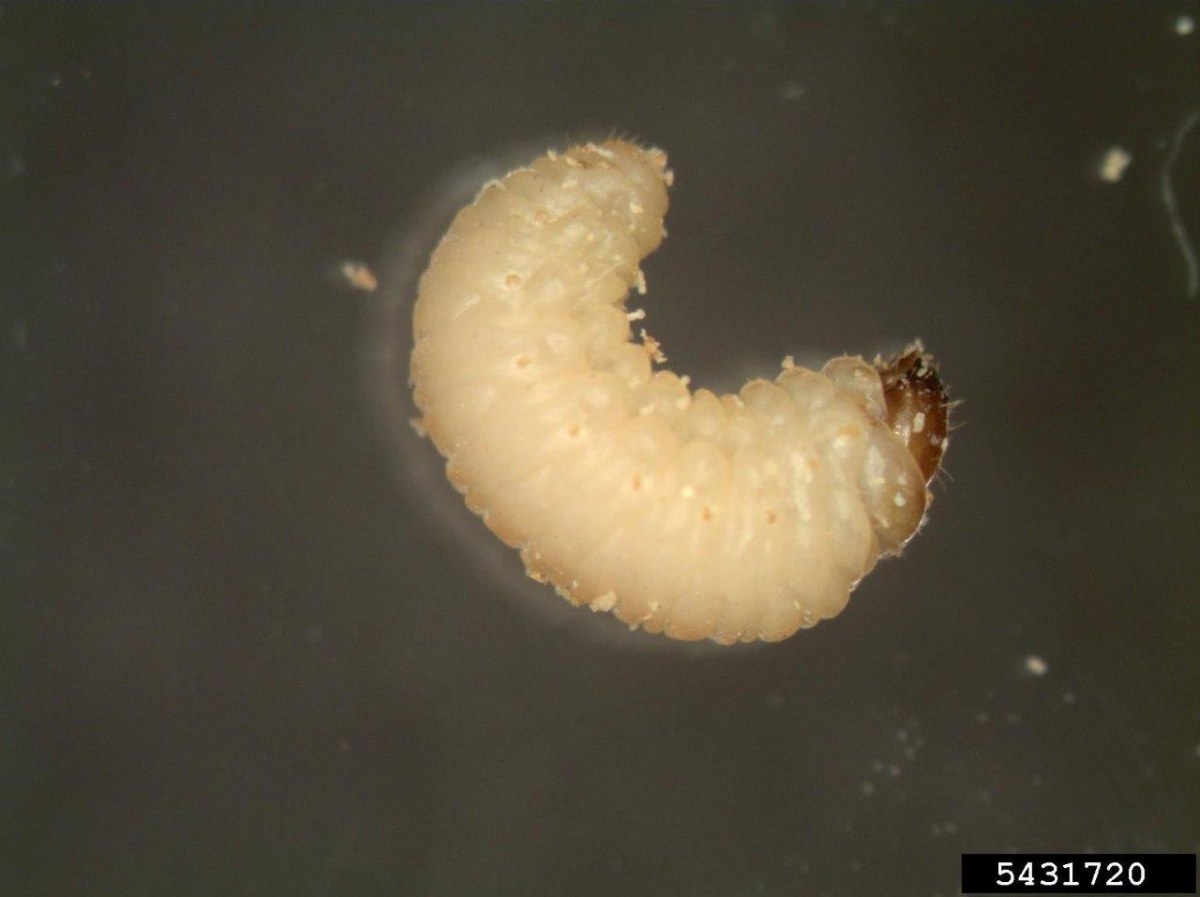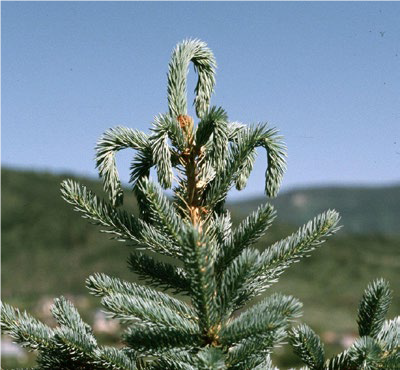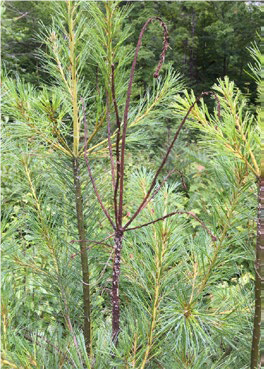The white pine weevil (Pissodes strobi) is one of the most destructive insect pests of eastern white pines in North America. Norway spruce, jack pine, scotch pine, pitch pine, red pine, blue spruce, and white spruce are also susceptible to white pine weevil damage.

USDA Forest Service, Bugwood.org.
Description
The white pine weevil larva is long, yellowish-white, and legless. The adult is a snout beetle about 0.2” in length. Its wing covers (elytra) are marked with brown and white scales and have a white patch of scales at their tip. The resting stage is a creamy-white pupa and is the same length as the adult (0.2”).
Life Cycle
Adult white pine weevils overwinter in litter on the ground. From April to May, they emerge and begin feeding on terminal growth. They favor feeding on bark 7-10” below dormant terminal buds. Females deposit eggs in the bark of the terminal growth, which hatch in 7-10 days. The developing larvae feed in the leader until maturity in July. Pupation occurs in larval chambers made of wood chips. Adults emerge in 10-15 days and continue to feed on old and new growth. The white pine weevil often kills 2-3 years of terminal growth. Damage from this weevil results in reduction of lumber yield and poor quality ornamentals for nursery and Christmas trees.
Management
IPM Strategies:
- Monitoring - At the first sign of wilting and drooping of terminals, check for excessive pitch flow from feeding and oviposition wounds. This usually occurs in late spring.
- Mechanical Control - If excessive pitch is found, cut open the area of pitch exit and look for the larvae. If larvae are found, remove the entire leader. Cut back all but one side shoot to maintain single-stem dominance.
- Chemical Control - White pine weevil can be controlled chemically by one to two applications of insecticide when adults emerge (from mid-April to early May). Spray applications should be two weeks apart.
Consult your county Extension Field Specialist for specific recommendations.

Bartlett Tree Experts, Bugwood.org.

Bartlett Tree Experts, Bugwood.org.

Cranshaw, Colorado State University.

Dode Gladders, University of New Hampshire.

Stop! Read the label on every pesticide container each time before using the material. Pesticides must be applied only as directed on the label to be in compliance with the law. All pesticides listed in this publication are contingent upon continued registration. Contact the Division of Pesticide Control at (603) 271-3550 to check registration status. Dispose of empty containers safely, according to New Hampshire regulations.
Download the resource for the complete factsheet.
